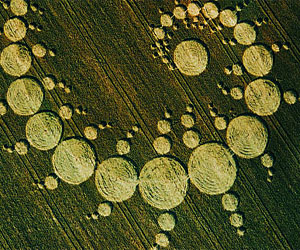


Unleashing Canine Athleticism And Bonding

Agility courses for dogs have become a popular and exciting way to engage our four-legged friends while tapping into their innate athleticism and intelligence. These courses, consisting of various obstacles and challenges, not only provide physical exercise but also create a strong bond between dogs and their owners. In this article, we'll explore the world of agility courses for dogs, the benefits they offer, and the thrill they bring to both dogs and their human companions.
What Is Agility Training?
Agility training is a dog sport that involves navigating a timed obstacle course. These courses can vary in complexity but typically include jumps, tunnels, weave poles, A-frames, and seesaws. The dog's task is to complete the course as quickly as possible, following their handler's commands and without knocking down any obstacles. The sport is not just about speed; it also requires precision and teamwork between the dog and their owner.
Physical Exercise And Mental Stimulation: Agility courses provide dogs with an excellent physical workout. Running, jumping, climbing, and weaving through obstacles help maintain a dog's fitness and health. This is especially beneficial for high-energy breeds, as it allows them to expend their excess energy in a constructive way. In addition to physical exercise, agility training offers significant mental stimulation. Dogs must follow commands, make quick decisions, and memorize the course, which challenges their cognitive abilities.
Building A Strong Bond: One of the most remarkable aspects of agility training is the bond it creates between dogs and their owners. The sport requires clear communication, trust, and cooperation. Handlers use verbal commands and hand signals to guide their dogs through the course. This teamwork enhances the connection between the two, as they learn to anticipate each other's movements and work together harmoniously.
Boosting Confidence: Agility courses also boost a dog's confidence. As they master obstacles and successfully complete courses, dogs gain a sense of accomplishment. This newfound confidence often carries over into other aspects of their lives, making them more well-adjusted pets.
Socialization: Agility training provides an excellent opportunity for dogs to socialize with other dogs and their owners. Many agility courses are conducted in group settings, allowing dogs to interact and learn from one another. This socialization is crucial for improving their behavior around other animals and people.
Who Can Participate?
Agility courses are open to dogs of all breeds and sizes. While some dogs, like Border Collies and Australian Shepherds, may excel due to their natural agility, virtually any dog can participate and enjoy the sport. The courses can be adapted to accommodate different skill levels, from beginners to advanced competitors.
Agility courses for dogs are a fantastic way to harness their athleticism and intelligence while building a strong bond with their owners. These courses offer physical exercise, mental stimulation, and the opportunity to excel in a challenging but fun environment. Moreover, agility training enhances a dog's confidence and socialization skills, making them better-rounded pets. For both dogs and their human companions, agility training is a thrilling and rewarding experience that brings joy and fulfillment to their lives.
Paving The Path To A Sustainable Future
 3. Carbon Pricing And Taxes
3. Carbon Pricing And Taxes
Carbon pricing mechanisms, such as carbon taxes and cap-and-trade systems, place a price on carbon emissions. By making carbon-intensive activities more expensive, these policies encourage individuals and businesses to reduce their carbon footprint. This, in turn, motivates a shift away from fossil fuel consumption.
4. Electrification Of Transportation
The electrification of transportation is another key strategy for reducing fossil fuel usage. Electric vehicles (EVs) are becoming increasingly popular as their technology improves and charging infrastructure expands. Shifting from gasoline and diesel-powered vehicles to EVs helps decrease the demand for fossil fuels in the transportation sector.
5. Investments In Public Transportation
Investments in public transportation systems can also contribute to fossil fuel reduction. Well-developed public transit networks make it easier for people to rely less on personal vehicles, thus decreasing the demand for gasoline and diesel fuels.
6. Sustainable Land Use And Urban Planning
Sustainable land use and urban planning focus on designing cities and communities that reduce the need for long commutes and encourage walking, biking, or the use of public transportation. This approach lowers fossil fuel consumption associated with daily commuting.
7. Research And Development
Investing in research and development is critical for the creation of cleaner and more efficient technologies. This includes innovations in energy storage, carbon capture and storage, and new methods of renewable energy production.






Transforming Trash Into Valuable Resources
 2. Biomass-To-Biofuel Conversion
2. Biomass-To-Biofuel Conversion
Biomass, including wood, crop residues, and dedicated energy crops, can be converted into biofuels through various processes such as pyrolysis, gasification, and biochemical conversion. Pyrolysis involves heating biomass in the absence of oxygen to produce bio-oil, which can be further refined into transportation fuels. Gasification converts biomass into a synthesis gas that can be used to produce fuels like ethanol and synthetic diesel. Biochemical conversion uses enzymes and microorganisms to break down biomass into biofuels like ethanol and biodiesel.
3. Plastics-To-Fuel Technologies
Plastics, which are notoriously challenging to recycle, can be transformed into valuable fuels using pyrolysis and depolymerization methods. Pyrolysis breaks down plastics into liquid fuel, gas, and char, which can be used as fuel or chemical feedstocks. Depolymerization processes chemically break down plastics into their constituent monomers, which can then be used to produce new plastics or fuels.
4. Municipal Solid Waste-To-Energy (MSW-To-Energy)
Municipal solid waste (MSW) is a diverse mixture of materials, and waste-to-energy facilities can convert this waste into electricity and heat through incineration or gasification. Incineration burns the waste at high temperatures, producing heat that is used to generate electricity. Gasification converts MSW into a synthesis gas that can be used for electricity generation or further refined into transportation fuels.
Hypnosis For Phobia Treatment
 Hypnosis, characterized by a state of deep relaxation and heightened suggestibility, offers a unique means of addressing phobias by tapping into the subconscious mind. During a hypnotherapy session, individuals are guided into a trance-like state where their minds become more receptive to suggestions. This heightened suggestibility allows the hypnotherapist to work with the individual to reframe their thoughts and feelings related to the phobia.
Hypnosis, characterized by a state of deep relaxation and heightened suggestibility, offers a unique means of addressing phobias by tapping into the subconscious mind. During a hypnotherapy session, individuals are guided into a trance-like state where their minds become more receptive to suggestions. This heightened suggestibility allows the hypnotherapist to work with the individual to reframe their thoughts and feelings related to the phobia.
Here's how hypnosis can play a crucial role in phobia treatment:
Accessing The Subconscious: Many phobias are rooted in the subconscious mind and linked to past experiences or traumas. Hypnosis can help individuals access these subconscious memories and feelings, allowing them to understand the root causes of their phobia.
Reprogramming Beliefs: Hypnotherapy enables individuals to challenge and reframe the negative beliefs and thought patterns associated with their phobia. By introducing positive and calming suggestions, the hypnotherapist can help individuals alter their emotional response to the feared object or situation.
Desensitization: Hypnosis can be used to gradually desensitize individuals to the phobic stimulus. In a trance-like state, individuals can mentally rehearse confronting their fear, becoming increasingly comfortable with the idea of facing it in reality.
Relaxation And Anxiety Reduction: Phobias often trigger intense anxiety and panic. Hypnotherapy is particularly effective in promoting relaxation and reducing anxiety, enabling individuals to approach their phobia with greater calmness and confidence.
Nature's Enigmatic Canvas
 Geometric Precision
Geometric Precision
One of the most striking aspects of crop circle designs is the precision with which they are executed. The symmetry, mathematical ratios, and proportional accuracy found in many formations have left experts and enthusiasts alike in awe. The complexity of these patterns suggests a level of artistic and mathematical skill that challenges conventional explanations.
Symmetry And Symmetry Breaks
Symmetry is a common feature in crop circle patterns, with many formations exhibiting bilateral or radial symmetry. However, some crop circles also incorporate "symmetry breaks," where the pattern appears to intentionally deviate from perfect symmetry, introducing intriguing irregularities or asymmetrical elements.
Fractals And Self-Similarity
Deciphering The Enigma
 Deciphering Nostradamus' cryptic language often involves attempting to find connections between his quatrains and historical events. Believers argue that his predictions have accurately foretold significant occurrences, while skeptics assert that the vague and flexible nature of his language allows for post-event retrofitting. This post-event retrofitting is a process in which quatrains are interpreted in a way that aligns with past events, but it is a subjective exercise that can yield different results based on the interpreter's perspective.
Deciphering Nostradamus' cryptic language often involves attempting to find connections between his quatrains and historical events. Believers argue that his predictions have accurately foretold significant occurrences, while skeptics assert that the vague and flexible nature of his language allows for post-event retrofitting. This post-event retrofitting is a process in which quatrains are interpreted in a way that aligns with past events, but it is a subjective exercise that can yield different results based on the interpreter's perspective.
Some interpretive strategies include looking for numerological patterns, anagrams, and hidden meanings within the text. Believers often point to specific quatrains that they argue are validated by historical events, such as the French Revolution or the rise of Adolf Hitler. However, skeptics claim that this can be a form of cherry-picking, where only those quatrains that seem to align with history are emphasized, while the majority that do not are ignored.
Moreover, Nostradamus' quatrains are subject to translations, which can further complicate the process of deciphering his cryptic language. Translations may vary in their interpretations of the original French verses, leading to different outcomes when attempting to match them with historical or contemporary events.
One challenging aspect of deciphering Nostradamus' quatrains is the time lag between his writings and the events they supposedly predict. The gap of centuries between his time and the events in question can make it difficult to establish a direct correlation. Skeptics often emphasize that Nostradamus wrote in a historical context that was vastly different from the modern world. The societal, political, and technological landscapes have evolved significantly, making it challenging to attribute his writings to contemporary issues or phenomena.